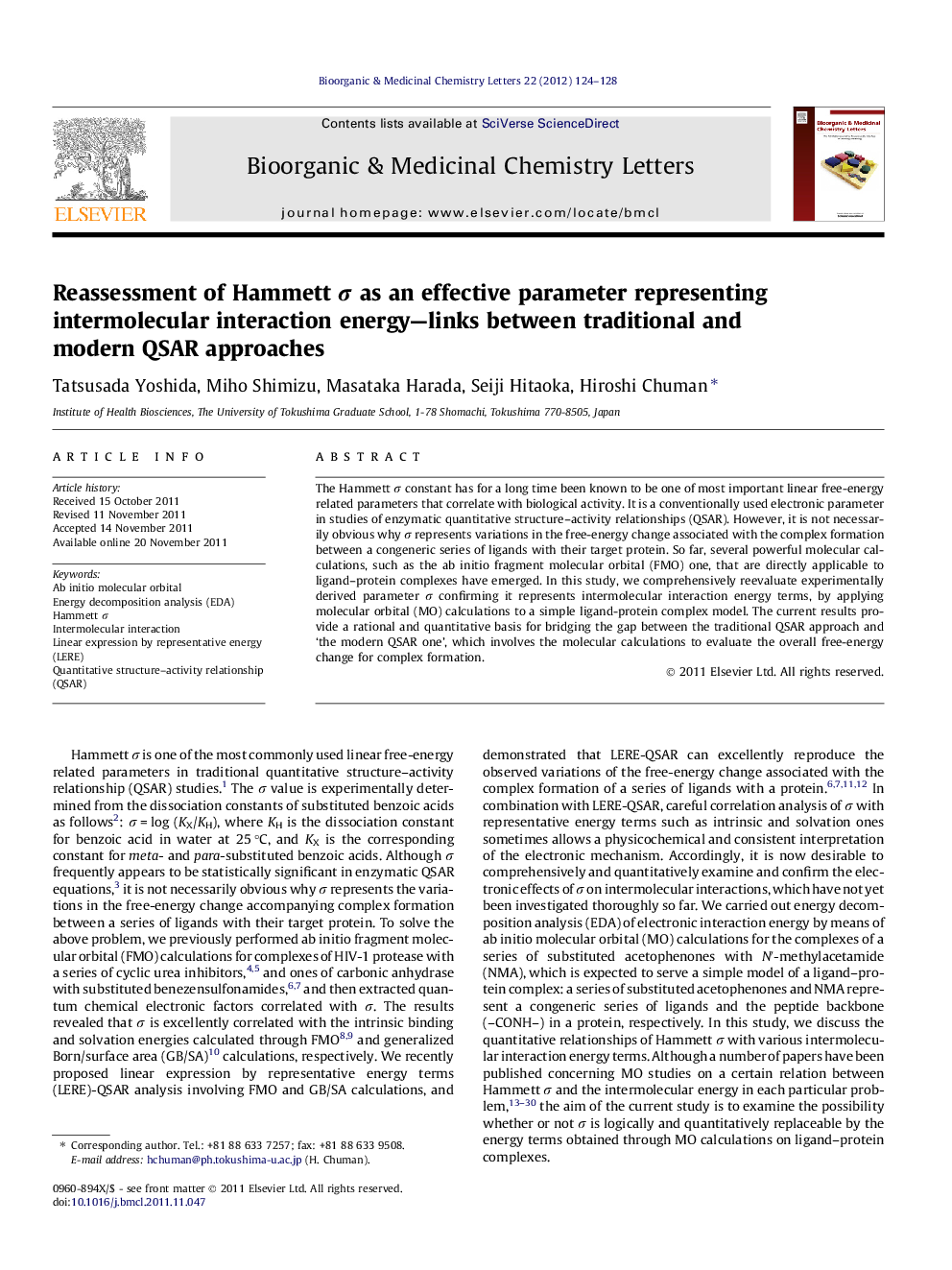| Article ID | Journal | Published Year | Pages | File Type |
|---|---|---|---|---|
| 10593098 | Bioorganic & Medicinal Chemistry Letters | 2012 | 5 Pages |
Abstract
The Hammett Ï constant has for a long time been known to be one of most important linear free-energy related parameters that correlate with biological activity. It is a conventionally used electronic parameter in studies of enzymatic quantitative structure-activity relationships (QSAR). However, it is not necessarily obvious why Ï represents variations in the free-energy change associated with the complex formation between a congeneric series of ligands with their target protein. So far, several powerful molecular calculations, such as the ab initio fragment molecular orbital (FMO) one, that are directly applicable to ligand-protein complexes have emerged. In this study, we comprehensively reevaluate experimentally derived parameter Ï confirming it represents intermolecular interaction energy terms, by applying molecular orbital (MO) calculations to a simple ligand-protein complex model. The current results provide a rational and quantitative basis for bridging the gap between the traditional QSAR approach and 'the modern QSAR one', which involves the molecular calculations to evaluate the overall free-energy change for complex formation.
Keywords
Related Topics
Physical Sciences and Engineering
Chemistry
Organic Chemistry
Authors
Tatsusada Yoshida, Miho Shimizu, Masataka Harada, Seiji Hitaoka, Hiroshi Chuman,
